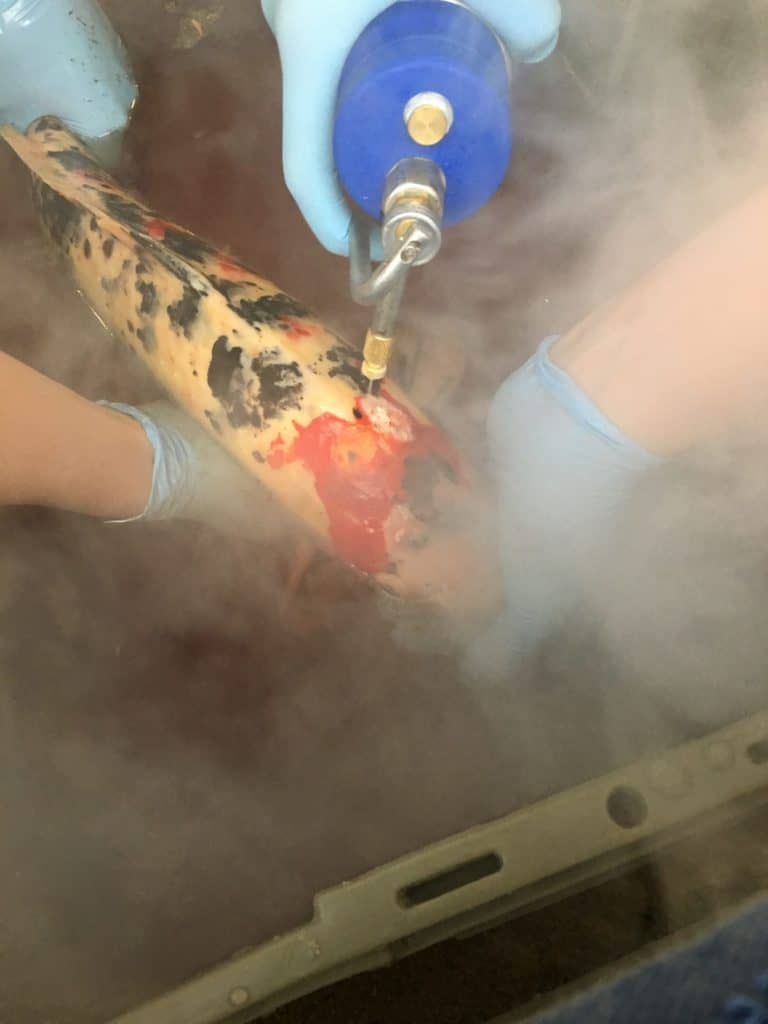Cryotherapy is being used more and more in aquatic veterinary medicine, but how does it work? DO NOT TRY THIS AT HOME.
Like cryotherapy in other species, the most beneficial treatments are for superficial skin issues. Our office commonly uses cryotherapy to treat external lumps and skin disease like hikui. It is critical that the cryotherapy be administered by a licensed professional. We do not treat any fish unless we have assured the water chemistry is within parameters, or the fish will not heal properly, and the fish are free of parasites. Disrupting the skin barrier by administering cryotherapy can leave a fish more vulnerable to an external attack. All fish receiving cryotherapy treatment are put under general anesthesia and given local anesthetic in addition to antibiotics.
After giving our pre-medications and allowing the fish to sit in an anesthetic bath, our veterinarian starts each treatment be debriding and drying the affected areas of the fish. This will allow the cryotherapy to stay in our targeted area and penetrate deeper. We contain the liquid nitrogen to a 0.5 cm margin around the affected site. Liquid nitrogen is applied is a constant stream a few centimeters above the fishes’ skin. We take extra precautions around the head, being careful around the nose, gills and eyes. Most treatments are done as a batch of three sequential treatments spaced one week apart. This allows us to deeply penetrate the affected tissue while allowing your fish time to heal. Learn more about this treatment.
Applying Cryotherapy
We have found this treatment procedure exceedingly beneficial for many of our patients. We have found that this treatment does remove a majority of the red and orange pigments of hikui-infected fish. If you are interested in learning more about treating your fish with cryotherapy, please call our office.


